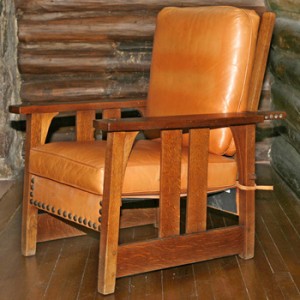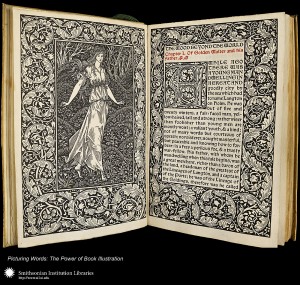Buddha, Plato, Marx, Darwin—all names you have heard before. Rightfully so, they are a handful of the most influential people in history. Their legacies are so widespread that their ideals have become synonymous with their names (Darwinism, Marxism). Some people, however, are influential in a more behind-the-scenes sort of way. Some people inspire a whole generation armed only with an idea. One of those persons is William Morris.
William Morris is remembered mostly as the founder of the Arts and Crafts movement. In 1860 England had just become industrialized and many materials that were once handmade (like chairs, doors, and tables) were now mass-produced by machines in factories. This discouraged Morris, as he believed the highest-grade materials would always be handmade.
Morris maintained that cathedrals and structures of the medieval period were the high water mark of man’s design. Every ornate intricacy, every stone vault, every stained glass window was the product of hours of hard labor. The reward for that labor is a vastly superior product and worker’s pride in a job well done.
Think of Legos, for example. It’s not the finished product that you buy; it’s the reward for making something big out of many small pieces. The pride that your son feels in his Legos is a simplified version of the pride that a craftsman feels in his craftsman home. It is this pride that encourages the builder to build more carefully and thus, produce higher quality. Without worker’s pride Morris felt houses and furniture were no longer an art form, but rather a homogenized heap of wood that is more house than home.
This ideal ultimately reached Gustav Stickley—the founder of the era’s finest furnishing company. In 1901 Stickley began publishing “The Craftsman”, a magazine devoted to handmade products and craftsman-style creation. This sparked a housing revolution. Suddenly consumers couldn’t get enough of the warm feel that a craftsman house offers, abandoning their larger Victorian houses for the more quaint, more lively arts and crafts.
The arts and crafts movement faded towards the end of the 40’s as mass-produced products and homogenization began to command the building process. In 1950, the era had all but come to an end. Post war veterans favored ranch style houses instead, which would go on to become the most popular house style in American history.
But Morris’ influence spread further than simply a housing style. His ideal of handmade, genuine creations spread to the book-binding industry where he created some of the world’s finest designed books. He also reached into the artistic world, encouraging artists to create through their own inspirations—not copying other styles. With Morris, individuality and personality was as important as life itself.
Atlas Signs and Plaques creates signs for all types of craftsman homes. We understand that the value of a good handmade product is largely undervalued in today’s society. As such, we make every single sign with the handmade touch that popularized the craftsman era and strive to create every sign with the same intrinsic, skilled touch that craftsman homes were built with. Check out our selection of craftsman signs and see if one is right for your home.








